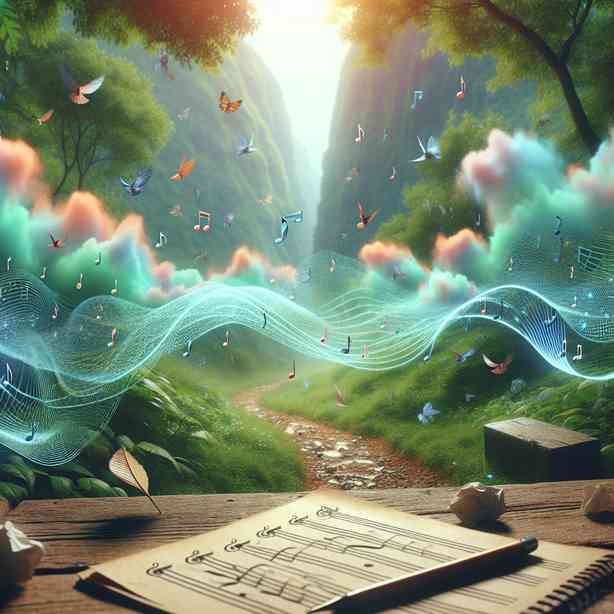
The interplay between ambient sound and music composition is a fascinating subject that has inspired composers and musicians for centuries. From the subtle rustle of leaves in a forest to the distant hum of a city, ambient sounds serve as both a backdrop and a source of inspiration in the creative process. This essay will explore the role of ambient sound in composition, examining its historical significance, its influence on emotional expression, and the ways in which contemporary composers utilize it in their works.
To begin, it is important to acknowledge that ambient sound has been present in the musical landscape for a long time. Classical composers, such as Claude Debussy, were influenced by the sounds of nature, incorporating elements of the environment into their compositions. Debussy’s “La Mer,” for instance, reflects the ebb and flow of waves, using musical motifs to evoke the feeling of being by the ocean. Such examples demonstrate that ambient sound is not merely an afterthought but a fundamental aspect of a piece’s emotional core.
In addition to classical music, the role of ambient sound can be traced through various musical genres. In jazz, for instance, musicians often incorporate the sounds of their surroundings into their performances, allowing the environment to affect the mood and direction of the music. Similarly, in popular music, artists like Brian Eno have embraced ambient sound as a crucial component, creating soundscapes that transport listeners to different environments. Eno’s ambient works exemplify how sound can transcend traditional musical boundaries, leading to innovative compositions that challenge our understanding of music itself.
Moreover, ambient sound serves as a powerful tool for emotional expression. Composers have long understood that the sonic environment can elicit specific feelings and memories. For example, the sound of chirping birds may evoke a sense of peace and tranquility, while urban noises can incite feelings of chaos or urgency. By consciously integrating these sounds into their compositions, musicians are able to enhance the emotional depth of their work. This technique allows them to connect with their audience on a more profound level, eliciting responses that go beyond the music itself.
Contemporary composers have further expanded the horizons of ambient sound in their work. The rise of technology has made it easier for musicians to capture and manipulate sounds from their environment. Field recordings, once used primarily for documentary purposes, have now become an integral part of sound design and composition. Artists like Max Richter and Ólafur Arnalds have utilized field recordings to create immersive auditory experiences that reflect the world around us. These recordings add an element of authenticity to their music, grounding their compositions in the realities of contemporary life.
Additionally, the concept of sound design in film and multimedia has heightened the importance of ambient sound in composition. Film scores often rely heavily on ambient sound to establish mood and setting, helping to immerse the audience in the narrative. Composers, such as Hans Zimmer and Rachel Portman, skillfully incorporate environmental sounds into their scores, enabling the audience to experience the film’s world more fully. The strategic use of ambient sound can heighten tension, evoke nostalgia, or create a sense of foreboding, illustrating its vital role in storytelling.
Furthermore, ambient sound not only enriches the listening experience but also encourages composers to explore new creative avenues. The process of incorporating ambient sound can lead to unexpected musical outcomes and inspire unique compositions. Many artists report that field recording sessions, where they capture sounds from various locations, ignite new ideas and directions for their music. This spontaneous exploration can result in innovative arrangements that blur the lines between music and sound art.
The relationship between ambient sound and composition also opens up discussions about the nature of music itself. What defines music? Is it the melody, harmony, rhythm, or the environmental sounds that encapsulate it? As composers continue to experiment with ambient sound, these questions provoke deeper reflection on our understanding of musicality. The boundaries of genre are increasingly fluid, encouraging musicians to embrace eclectic influences and diverse sound sources, further enriching the compositions they create.
As we look to the future, the role of ambient sound in composition is likely to evolve further. With the rapid technological advancements in sound recording and manipulation, artists will continue to find creative ways to incorporate and innovate with ambient sounds. The rise of virtual and augmented reality presents new opportunities for composers to create immersive soundscapes that engage listeners in unprecedented ways. As these technologies continue to develop, the interplay between ambient sound and music will undoubtedly deepen, leading to more integrated and experiential compositions that resonate with audiences worldwide.
In conclusion, the influence of ambient sound in composition is profound and multifaceted. It has a rich historical background, serves as a vehicle for emotional expression, and continues to inspire contemporary musicians to push creative boundaries. The exploration of ambient sound not only enriches the listener’s experience but also challenges our understanding of music and its capabilities. As we move forward in an increasingly noisy world, the careful integration of ambient sound into compositions will remain a vital aspect of musical expression. By embracing these elements, composers can create works that resonate deeply with audiences, inviting them to experience the world in new and evocative ways.


